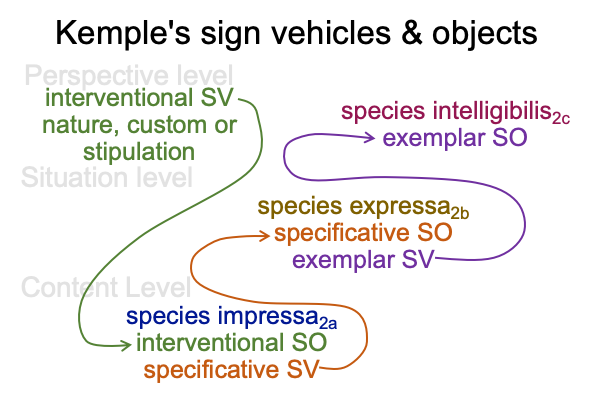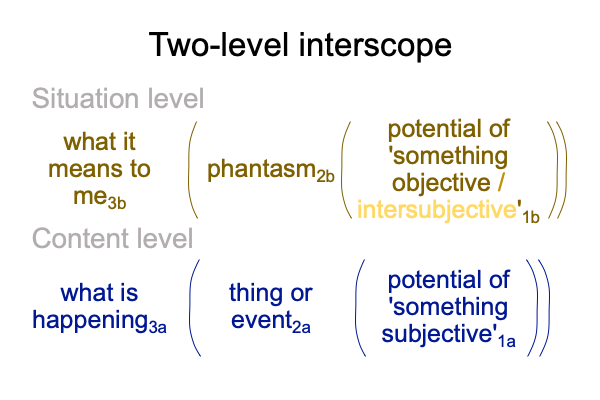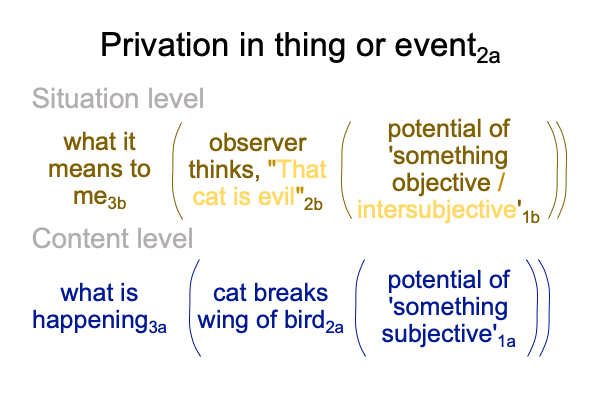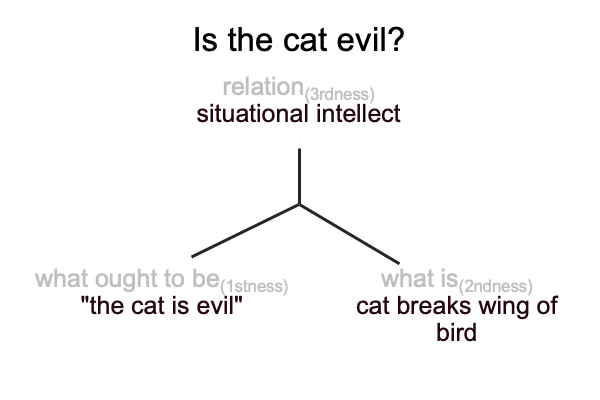Looking at Brian Kemple’s Essay (2020) “Signs and Reality” (Part 6 of 8)
0020 Comments on Brian Kemple’s Essay (2020) “Signs and Reality” tells a story and suggests associations between Kemple’s… er…. Aquinas’s terminology and the category-based nested form.
First, three kinds of sign-objects correspond to three actualities in a three-level interscope.
Second, three sign-relations couple the levels, so that each object may serve as both a sign-vehicle and sign-object. The only sign that does not serve as both a sign-vehicle and sign-object is the interventional sign.
0021 Here is a picture.

0022 The interventional sign couples the perspective and content levels.
The specifying sign couples the content and situation levels.
The exemplar sign couples the situation and perspective levels.
0023 Kemple specifically mentions three types of signs. These correspond to the character of the sign-vehicle for the interventional sign.
These types are nature, custom and stipulation.
These three types associate to periods in human evolution.
0024 The first two are discussed in Comments on Chris Sinha’s Essay (2018) “Praxis, Symbol and Language”. See this blog for the middle of May, 2021.
Early in the Lebenswelt that we evolved in, natural events serve as sign-vehicles for interventional signs. Since hominins adapt into the niche of triadic relations, the sign-objects of the interventional sign, sensations and feelings, turn into sign-vehicles for specifying signs.
Later in the Lebenswelt that we evolved in, linguistic manual-brachial word-gestures serve as sign vehicles for interventional signs. The sign-objects decode the interventional signs according to custom. Specifying signs are trained by timeless traditions. Exemplar signs cannot be articulated using hand talk, yet they involve crucial adaptations, because the exemplar sign-object manifests as a commitment.
0025 Finally, after the first singularity, in our current Lebenswelt, the exemplar sign is able to be symbolized by speech-alone talk.
This turns out to be most problematic, since speech-alone allows the interventional sign-vehicle to be stipulated. Comments on Brian Kemple’s Essay (2020) “Signs and Reality” tells a story about a stipulation. The story also tells about concupiscence.
0026 The sign-object of the exemplar sign occupies the same position in the three-level interscope as the sign-vehicle of the interventional sign. This is significant. Thomas Aquinas’s theology of original sin conducts itself precisely along the circuit depicted above, as discussed in Comments on Daniel Houck’s Book (2020) “Aquinas, Original Sin and the Challenge of Evolution”.



